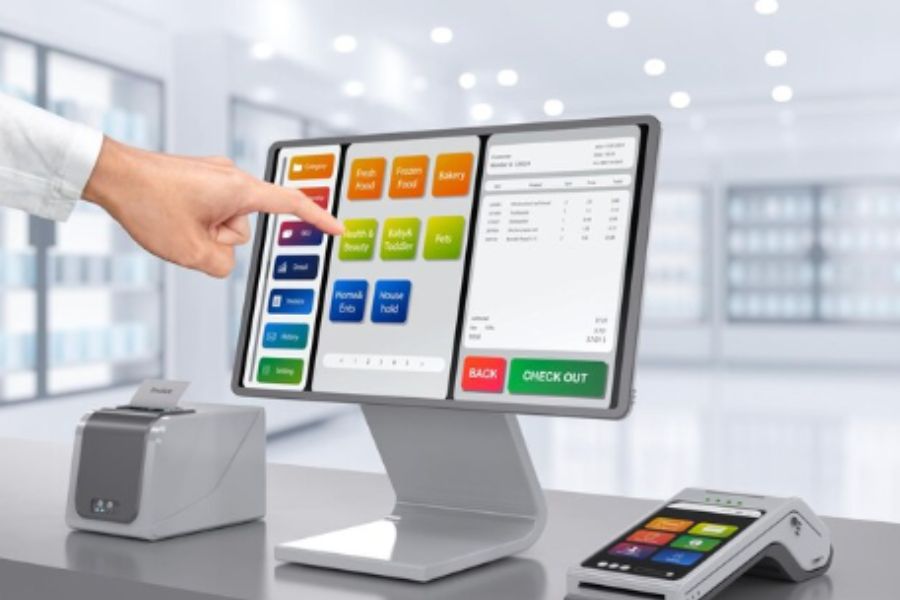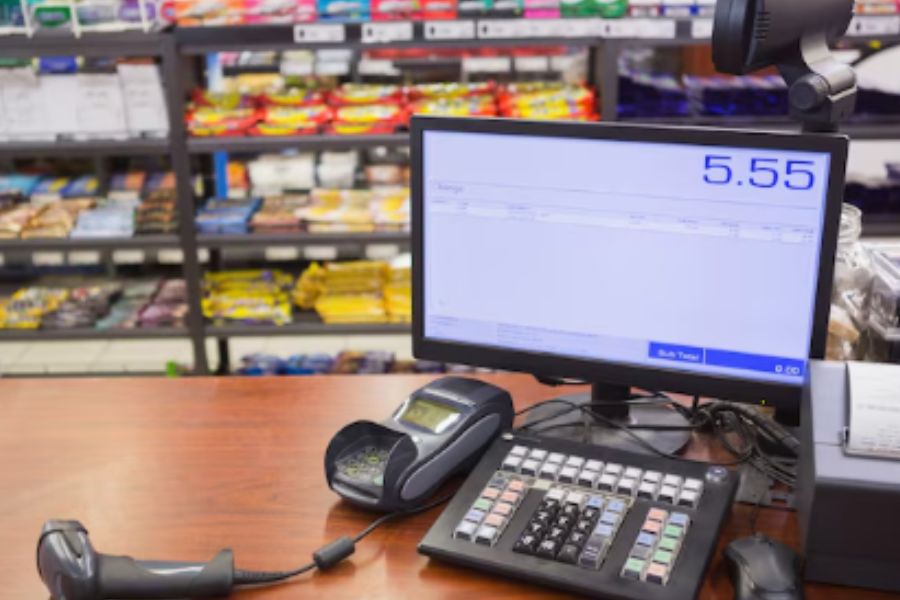If you’re looking for a clothing store POS to streamline your sales process, improve customer service, and boost overall efficiency, you’re in the right place. In this post, we’ll explore the ins and outs of choosing the best POS system for your clothing store, covering everything from features to consider to tips for implementation. Let’s dive in!
Significance of Point of Sale (POS) Systems in the Clothing Retail Industry
Point of Sale (POS) systems play a crucial role in the clothing retail industry, providing a range of benefits that contribute to efficient operations and enhanced customer experiences.
Here are some key points highlighting the significance of POS systems in the clothing retail sector:
- Transaction efficiency: POS systems streamline the checkout process, enabling faster and more efficient transactions. This is particularly important in the clothing industry, where customers may make multiple purchases, and quick checkouts contribute to overall customer satisfaction.
- Inventory management: Clothing retailers often deal with a large and diverse inventory. POS systems help in tracking and managing inventory levels in real time. This aids in preventing overstocks or stockouts, ensuring that popular items are adequately stocked.
- Sales and promotions: POS systems facilitate the implementation of sales and promotional strategies. Retailers can easily apply discounts, manage loyalty programs, and execute marketing campaigns directly through the system. This flexibility is essential for clothing retailers who frequently run promotions to attract customers.
- Customer Relationship Management (CRM): POS systems often come integrated with CRM POS features, allowing retailers to track customer preferences and purchase history. This data is valuable for personalized marketing, targeted promotions, and building long-term customer relationships.
- Analytics and reporting: The data collected by POS systems provides valuable insights into sales trends, popular products, and customer behavior. Retailers can generate detailed reports and analytics, helping them make informed decisions about inventory, pricing, and marketing strategies.
- Multi-channel integration: In the era of omnichannel retail, POS systems play a key role in integrating various sales channels, including physical stores, online platforms, and mobile applications. This ensures a seamless shopping experience for customers across different touchpoints.
- Security: POS systems enhance transaction security by encrypting payment information, reducing the risk of fraud. With features like end-to-end encryption and secure payment processing, clothing retailers can instill trust in their customers regarding the safety of their financial transactions.
- Employee management: POS systems help in managing employee activities, tracking sales performance, and monitoring individual productivity. This information is valuable for assessing staff performance, identifying training needs, and optimizing workforce efficiency.
In short, the adoption of clothing store POS systems in the clothing retail industry is essential for maintaining a competitive edge, improving operational efficiency, and delivering a satisfying shopping experience to customers. The integration of modern POS technology aligns with the dynamic nature of the fashion retail sector, providing the tools necessary to adapt to changing market trends and consumer expectations.
Evolution of Point of Sale Systems
The evolution of Point of Sale (POS) systems traces a fascinating journey from manual cash registers to sophisticated modern solutions, revolutionizing the way businesses conduct transactions and manage operations.
Let’s delve into the historical overview of this evolution:
Historical Overview of Manual Cash Registers
In the late 19th century, the concept of a cash register emerged as a solution to prevent employee theft and streamline sales transactions. Invented by James Ritty in 1879, the first manual cash register, known as the “Incorruptible Cashier,” was a simple device that recorded sales and provided a receipt. These early cash registers were entirely mechanical, relying on gears and levers to perform basic calculations and issue receipts.
Despite their limitations, manual cash registers represented a significant leap forward in terms of business operations and accountability.
Introduction of Electronic Cash Registers
The mid-20th century witnessed a pivotal shift with the introduction of electronic cash registers. These devices incorporated electronic components such as transistors and integrated circuits, enabling more advanced functionalities.
Electronic cash registers automated certain aspects of transactions, including calculating sales tax and generating more detailed receipts. This evolution reduced the margin for human error and increased the speed of transactions, contributing to improved efficiency in retail environments.
The electronic cash register era also saw the integration of features like barcode scanners and inventory management, allowing businesses to better track sales and manage their stock. This integration laid the groundwork for the digitalization of transaction processes and set the stage for more sophisticated POS systems.
Emergence of Modern POS Systems
The 21st century marked a rapid and profound transformation in POS technology. Modern POS systems are comprehensive solutions that go beyond basic transaction processing. With the advent of cloud computing, mobile technology, and advanced software, POS systems have become powerful tools for businesses of all sizes.
One notable development is the shift from traditional, on-premise POS systems to cloud-based solutions. Cloud-based POS systems offer greater flexibility, scalability, and accessibility, allowing businesses to manage their operations remotely and in real time. This evolution is particularly beneficial for businesses with multiple locations, as they can centralize data management and ensure consistency across various outlets.
The integration of mobile devices, such as tablets and smartphones, into POS systems has further enhanced customer interactions and service delivery. Mobile POS systems enable staff to process transactions on the shop floor, reducing wait times and enhancing overall customer satisfaction.
Additionally, these systems often come with features like customer relationship management (CRM) tools, helping businesses personalize interactions and build stronger connections with their clientele.
Furthermore, modern POS systems play a crucial role in data analytics and business intelligence. Merchants can now gather and analyze vast amounts of transaction data to gain insights into customer behavior, preferences, and overall business performance. This data-driven approach empowers businesses to make informed decisions, optimize inventory management, and tailor marketing strategies for greater success.
The evolution of POS systems reflects the ongoing innovation and adaptation to the changing needs of businesses and consumers. From humble beginnings as manual cash registers to powerful digital platforms, POS technology continues to evolve, shaping the future of retail and hospitality industries.
Key Features of Clothing Store POS Systems
In the realm of clothing retail, a well-equipped Point of Sale (POS) system can significantly elevate operational efficiency and customer satisfaction. Here are key features crucial for a clothing store POS system:
- Omnichannel Management in a Unified System
Clothing store POS systems offer omnichannel management capabilities, allowing retailers to seamlessly integrate online and offline sales channels. These systems enable centralized inventory management across multiple locations, ensuring accurate stock levels and reducing the risk of overselling.
- Flexibility
Modern POS systems for clothing stores are highly flexible, allowing retailers to customize workflows and adapt to changing business needs. Whether it’s creating new product categories, defining promotions, or setting up loyalty programs, these systems offer flexibility to accommodate diverse requirements.
- Swift and Effective Sales Execution
Speed is paramount in retail, and clothing store POS systems are designed for swift and effective sales execution. With intuitive interfaces and quick checkout processes, these systems minimize waiting times and enhance the overall shopping experience for customers.
- Utilizing Real-Time Sales Data Analysis
Clothing store POS systems provide real-time sales data analysis, empowering retailers to make informed decisions. From identifying bestselling products to analyzing customer purchasing patterns, these insights enable retailers to optimize inventory management, pricing strategies, and marketing campaigns.
- Establishing Customer Loyalty Initiatives
Building customer loyalty is essential for long-term success, and clothing store POS systems facilitate the implementation of loyalty initiatives. Whether it’s issuing reward points, offering personalized discounts, or sending targeted promotions, these systems help retailers nurture relationships with their most valuable customers.
- Providing Product Variants Independently
Clothing retailers often offer products in multiple variants such as size, color, and style. POS systems enable retailers to manage these variants independently, simplifying inventory tracking and ensuring accurate stock levels for each product variant.
- Implementing Barcode Systems
Barcode systems are integral to modern retail operations, enabling quick and accurate product identification. Clothing store POS systems support barcode scanning, allowing retailers to expedite checkout processes and reduce manual errors.
- Enticing Package Deals
Package deals are a popular sales strategy in the retail industry, and POS solutions facilitate the implementation of bundled offers. Whether it’s buy-one-get-one promotions or discounted bundles, these systems enable retailers to create enticing package deals to drive sales and increase average transaction value.
- Simplified Return and Exchange Procedures
Efficient handling of returns and exchanges is crucial for customer satisfaction, and clothing store POS systems streamline these processes. With built-in return and exchange workflows, retailers can quickly process returns, issue refunds, and exchange products, enhancing the overall shopping experience for customers.
- Seamless Management of Multiple Store Locations
For clothing retailers with multiple store locations, centralized management is essential, and POS systems offer seamless integration across locations. Whether it’s transferring inventory between stores, analyzing sales performance across locations, or implementing consistent pricing strategies, these systems ensure uniformity and efficiency in multi-store operations.
Tips to Select the Ideal Clothing Store POS System
Are you wondering which POS is right for your clothing store? Don’t worry, let’s explore some tips below to find a suitable POS for your clothing store:
Evaluating the Unique Requirements of Your Store
Before selecting a POS system for your clothing store, it’s essential to evaluate your unique requirements. Consider factors such as the size of your store, the volume of transactions, the complexity of your inventory, and any specific features or integrations you may need. For instance, a small boutique with a limited inventory may have different needs compared to a large chain store with multiple locations.
Think about your customer base as well—do you need features like loyalty programs, gift cards, or layaway options? Understanding these requirements will help you narrow down your options and choose a POS system that aligns with your operational needs.
Financial Planning and Cost Analysis
Investing in a POS system is a significant decision, and it’s crucial to conduct thorough financial planning and cost analysis. Evaluate not only the upfront costs of hardware and software but also ongoing expenses such as maintenance, support, and software updates. Some systems may have hidden fees, such as transaction fees or charges for additional users, so make sure to read the fine print.
Moreover, consider the potential return on investment (ROI). A more expensive system with advanced features might save you money in the long run by improving efficiency and sales.
Potential for Expansion and Long-Term Viability
Choose a POS system that can scale with your business and accommodate future growth. Consider factors such as the system’s ability to support additional users, locations, and features, as well as the vendor’s track record and commitment to innovation.
A scalable POS system ensures that you won’t need to switch systems as your business grows. Look for vendors with regular software updates and a proactive approach to adopting new technologies. This will help ensure the long-term viability of your POS system and keep your business competitive.
Integration Compatibility with Current Equipment and Software
Compatibility with your existing equipment and software is essential for a seamless transition to a new POS system. Ensure that the chosen system integrates smoothly with your current hardware, software, and third-party applications to avoid disruptions to your store operations.
For example, if you already have barcode scanners, receipt printers, or accounting software, make sure the POS system can work with these tools. Integration capabilities can also extend to e-commerce platforms, CRM systems, and other business tools, providing a unified system that enhances overall efficiency.
ConnectPOS is an advanced point-of-sale solution designed to meet the unique needs of clothing stores. With seamless integration capabilities, scalable features, and robust support, ConnectPOS helps you streamline operations, enhance customer experiences, and drive growth.
FAQs: Clothing Store POS
1. What is a POS System, and How Does It Differ from a Traditional Cash Register?
A POS system is a software and hardware solution that enables retailers to process transactions, manage inventory, and analyze sales data. Unlike traditional cash registers, POS systems offer advanced features such as inventory tracking, customer relationship management, and sales reporting, making them essential tools for modern retail operations.
2. Can a POS System Help to Manage Multiple Store Locations?
Yes, clothing store POS systems are designed to facilitate the management of multiple store locations. These systems offer centralized inventory management, sales reporting, and administrative controls, allowing retailers to oversee operations across multiple locations from a single dashboard.
3. How Secure are POS Systems in Terms of Customer Payment Data?
Security is a top priority for POS systems, especially concerning customer payment data. Modern POS systems employ robust security measures such as encryption, tokenization, and PCI compliance to protect sensitive information and prevent unauthorized access or data breaches.
4. Is it Possible to Integrate a POS System with My Online Store?
Yes, many clothing POS systems offer integration with online stores, enabling retailers to synchronize inventory, sales, and customer data across physical and digital channels. This integration facilitates omnichannel retailing, allowing customers to shop seamlessly across various platforms while ensuring consistency in inventory and pricing.
Conclusion
In summary, clothing store POS systems are powerful tools that can significantly impact sales and operational efficiency. From streamlining sales processes to providing valuable insights through data analysis, these systems offer a myriad of benefits for clothing retailers. By understanding the significance of POS systems, exploring their evolution, and leveraging key features tailored for clothing stores, retailers can harness the full potential of these systems to drive success in today’s competitive retail landscape. Also, by following these tips for selecting the ideal POS, retailers can make informed decisions and ensure a seamless transition to a modern retail solution that will elevate their business to new heights.
Contact ConnectPOS today to discover how we can help your clothing store thrive with the perfect POS system.



